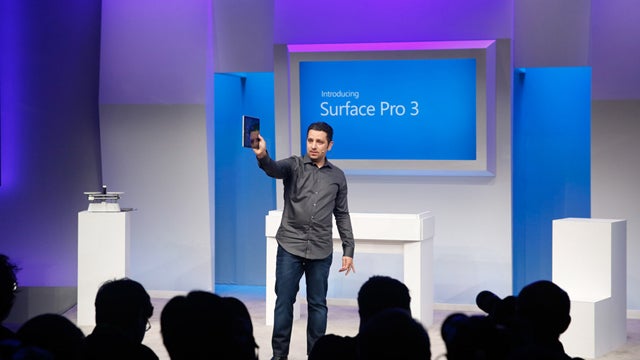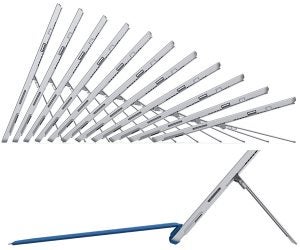Surface Pro 3: Microsoft’s laptop replacement finally grows up

Has Microsoft finally cracked it?
OPINION Andy Vandervell believes Microsoft has finally hit upon a formula that makes sense with the announcement of the new, 12-inch Surface Pro 3.
I’m an iPad user, I have been since the the iPad 2 and I use my iPad Air daily. It’s a constant companion and it’s my go to device when at home. I still have a laptop and use it for all sorts of things, but only when I can’t do what I want on my iPad and that happens less and less these days.
But despite my love for the iPad I’ve always held an odd sort of affection for the Surface Pro. Both versions I’ve used have always been a little too flawed in too many ways for me to make the switch, but I respected and understood what Microsoft was grasping at even if it struggled to execute its vision successfully.
With the Surface Pro 3, however, I think Microsoft has finally hit upon a formula that makes the Surface Pro a fully formed individual, rather than a product with one foot in iPad land and one in PC land.
SEE ALSO: Surface Pro 3 vs Surface Pro 2
It’s a much better laptop killer than an iPad killer
The change in size and shape is key here. Previous Surface Pros always felt a little weird to use. The 10-inch screen wasn’t really large enough to use comfortably in desktop mode, while its 16:9 aspect made it awkward to handle as a tablet.
Switching to a 3:2 aspect similar to the iPad and upping the screen to 12-inches should solve these two problems. A 12-inch screen is a good size for using desktop applications on the go, while the 3:2 aspect should make it feel far more natural as a large tablet. Sure, this makes the Surface Pro 3 a seriously large tablet, but it’s actually thinner and lighter than the Surface Pro 2.
This change also unlocks the untapped potential of the stylus, now further improved and upgraded for the Surface Pro 3. The stylus alone won the Surface Pros plenty of fans in the past, but once again the widescreen aspect did a poor job of delivering its potential. As Microsoft’s demo showed, it’s clearly convinced the Pro 3 does the ‘digital canvas’ much better.

It can almost sit flat and the keyboard now had a more natural angle
Aggressive pricing could be right
Now that the Surface Pro now looks like a more convincing replacement to a laptop, rather than a wannabe tablet, Microsoft’s pricing also proves intriguing. We don’t have proper UK pricing yet, but the entry-level Surface Pro 3 will sell for $799, $100 less than the Surface Pro 2. It’s not as powerful, but it’s certainly powerful enough.
Apply the same conversion as with the Surface Pro 2 ($899 to £719) and we arrive at a potential UK price of £619, or £230 less than the 2014 MacBook Air I’ve just reviewed. You’ll need to factor in the price of a keyboard cover as well, which puts the two on similar ground, but the vastly superior screen on the Surface Pro 3 (2,160 x 1,440 vs 1,400 x 900) should make it a tempting alternative.
There is always a but…
Or in the case of the Surface Pro 3, there are two of them. One is the whole ‘lapability’ question, the phrase Microsoft chose to use to describe using the Surface Pro 3 on your lap. It seems confident it’s solved the problem thanks to the new stand and keyboard design, but I’ll believe that when I try it myself.
The other is that the Surface Pro 3 won’t dent the iPad in the slightest. That’s ok to an extent as the Surface Pro 3 is not trying to be the iPad. But Microsoft still needs to come up with a convincing alternative to the iPad if it’s to win back ground surrendered to Apple. Perhaps the still rumoured Surface Mini will be it? We’ll see.

